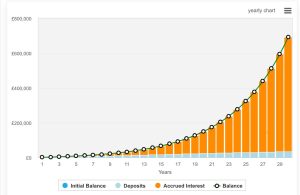One reason — or excuse — many people use for not start investing is money.
That is understandable.
Having said that, though, it need not take huge amounts of money to start buying shares. In fact I think there is a lot to be said for beginning on a small scale. Any learners’ mistakes may be less costly that way.
If I had a spare £480, here are three steps I would take to start investing.
1. Getting ready to buy shares
First, I would put the money into a share-dealing account or Stocks and Shares ISA that I felt matched my own needs and circumstances best (there are lots of different options available).
Doing that I would be ready to put the money into the market as soon as I found shares to buy.
2. Understanding how the stock market works
However, I would not be in a rush to buy. There are lots of shares that perform badly or moderately – and only a few that perform spectacularly well.
I might not find the brilliant ones – but I would certainly try! So, I would take time to learn about how the stock market works in practice.
For example, when I buy a share, what am I actually getting – and how can I decide if the price is attractive? What costs and fees might eat into my returns? What is the right mixture of risk and potential reward? Many people start investing with too little focus on risk and too high an estimation of their own stock picking capabilities.
In most areas of life, investing time in education and understanding how things work before doing them makes sense. The stock market is no different.
3. Finding shares to buy
Even with £480, I would not want to put all my eggs in one basket, so I would diversify across at least a couple of different shares. I might also consider buying shares in investment trusts, which themselves typically have a diversified portfolio.
I do not buy shares simply because I think the price might move higher. That is not investment, but speculation. Instead, I look for great businesses I think are substantially undervalued when weighing their current share price against future commercial prospects.
Of course that involves some level of estimation in my part – nobody knows for sure what will happen in future. Still, I look for certain characteristics.
This can be seen with my ownership of shares in JD Sports (LSE: JD).
The global market for sportswear is large and I expect it to stay that way over time. Thanks to a network of thousands of stores spanning multiple markets and a large digital presence, JD Sports is able to tap into that potential.
The retailer has a number of competitive advantages, from economies of scale to an outstanding understanding of consumer trends and what its target customers like.
That does not mean it is all plain sailing. Nike has struggled with weak demand this year and that is a risk to revenues and profits of retailers including JD Sports.
But, as a long-term investor, I like the balance of risk and potential reward I think owning JD Sports shares offers me.
This post was originally published on Motley Fool







